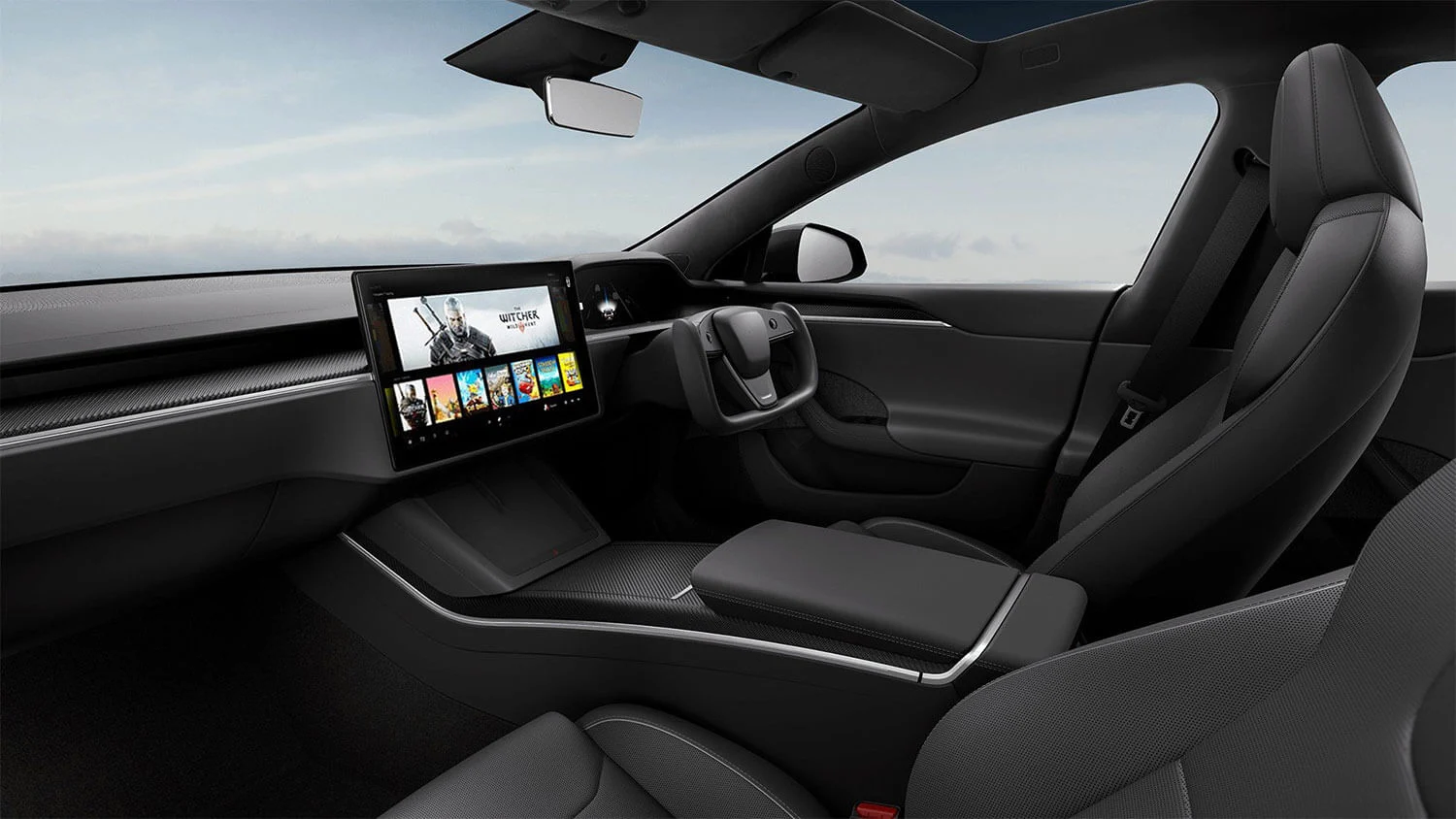Digital dashboards have been around for several decades, and their development has mirrored the progress of other digital technologies. A comparison between Fortnite and Pong highlights just how much we’ve advanced.
Over the years, we’ve witnessed a number of awkward and downright poor attempts at digital dashboards. Many were more focused on style than functionality, and some continue to frustrate drivers today.
On the other hand, the best digital dashboards of today make accessing information straightforward and intuitive.
They enhance the driving experience rather than complicating it. That’s why this list primarily features modern vehicles, rather than older models that have earned their place in the past.
The technology has evolved quickly, with a current trend favoring the use of multiple screens. Some of these are highly configurable, while others serve specific functions, such as controlling the climate.
Additionally, the Tesla Model 3 has taken a completely different approach, opting for a digital setup that eliminates the traditional instrument panel. Below are the 10 best cars featuring digital dashboards.
1. 2019 Audi A8
The 2019 Audi A8 luxury sedan takes digital dashboard technology to the next level by blending impressive functionality with modern design.
While many digital displays tend to focus on being quirky or overly cute to signal their modernity, the A8’s design team took a more practical approach by prioritizing the effective delivery of information.
It all starts with a large, configurable full-color display positioned directly in front of the driver, which is easily visible through the steering wheel.
This screen can prominently display a map showing the car’s current location, while still providing essential information such as speed, gear selection, and engine revolutions.
Additionally, a 10.1-inch touchscreen display features a smartphone-style menu that is intuitive and user-friendly. Icons within the system can be customized to suit personal preferences, and the system is capable of storing up to seven different user profiles.
Audi is a brand synonymous with luxury, precision engineering, and cutting-edge technology, and with the launch of the redesigned 2019 Audi A8 L, the brand continues to push the boundaries. This long-wheelbase, full-size luxury sedan is packed with impressive features, including Audi’s first-ever 48-volt mild hybrid system.
The A8 L also integrates Audi’s latest driver assistance technologies, infotainment upgrades, and performance enhancements, which I had the opportunity to experience in a European-spec model earlier this year.
However, the 2019 A8 L that has arrived in the United States comes with a slightly adjusted feature list due to regulatory and market preferences.
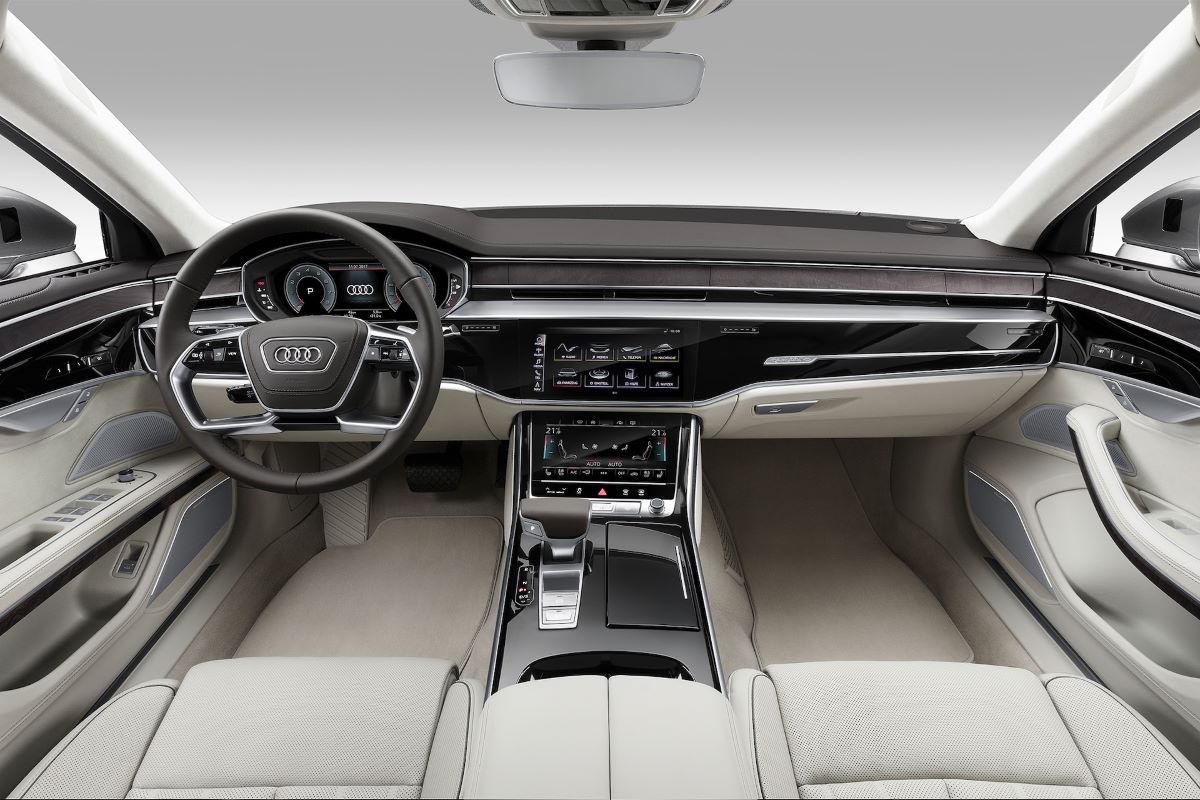
One of the standout innovations in the 2019 A8 L is the new mild hybrid system (MHEV), which is paired with a 3.0-liter twin-scroll turbocharged engine. This engine delivers 335 horsepower and 369 lb-ft of torque, which is sent through an 8-speed automatic transmission to Audi’s Quattro all-wheel-drive system.
The system is equipped with a 48-volt starter-generator and a small 10Ah lithium-ion battery, which captures energy through regenerative braking. This energy is used to power an advanced stop-start system, offering smoother transitions and more aggressive shutdown of the combustion engine during idle or coasting, ultimately improving fuel efficiency.
While the powertrain delivers a respectable performance with solid mid-range torque and a 0-60 mph time of 5.6 seconds in Dynamic mode, the driving experience can feel a bit sluggish at times, particularly in stop-and-go traffic.
In the Comfort and Eco settings, there is a noticeable delay in throttle response due to the turbocharger or gearbox not always reacting quickly enough.
Despite this, the A8 L’s character leans towards a more relaxed, refined driving style, so this lack of immediate throttle response is not a dealbreaker.
Audi expects the A8 L to achieve fuel economy ratings of 19 mpg in the city and 29 mpg on the highway, which is on par with the 2018 model that lacked hybrid technology.
Although the addition of hybrid systems and other luxurious upgrades is a step forward, it is somewhat disappointing to see no significant improvement in fuel economy for the 2019 model, especially considering the sedan’s reduction of 176 pounds in weight.
When compared to the Mercedes-Benz CLS, which also utilizes a 48-volt system and a 3.0-liter six-cylinder engine, the Benz offers a more robust driving experience with better acceleration, thanks to its electric torque assistance. If you’re interested in exploring mild-hybrid systems, the smaller Benz is certainly worth considering.
The inclusion of Audi’s MHEV system offers more than just fuel savings. It also powers many of the vehicle’s accessory systems without putting strain on the engine’s performance. This includes Audi’s adaptive air suspension and Dynamic All-Wheel Steering (D-AWS).
The adaptive air suspension comes standard and provides four ride-height settings: Comfort, Dynamic, Low-Speed Lift for clearing obstacles, and Low Drag, which automatically activates at highway speeds to enhance fuel efficiency.
The air suspension system in the A8 L performs more smoothly and adjusts more quickly than some of the 12-volt systems I’ve tested, making the process of navigating steep driveways more fluid and less cumbersome.
While the 2019 Audi A8 L stands out with its innovative technology, impressive ride quality, and luxury features, it’s clear that there is still room for improvement in areas like fuel efficiency. Nevertheless, the A8 L remains one of the most technologically advanced luxury sedans available today.
2. 2018 Mercedes-Benz S-Class
The Mercedes-Benz S-Class features an instrument panel array that places the equivalent of two movie screens side by side. Both 12.3-inch color displays offer high-resolution visuals.
Their 8:3 aspect ratio is somewhat unconventional, but it’s similar to the “Panavision” format used in filmmaking.The left display functions as a traditional instrument cluster, offering the driver as much vehicle information as needed.
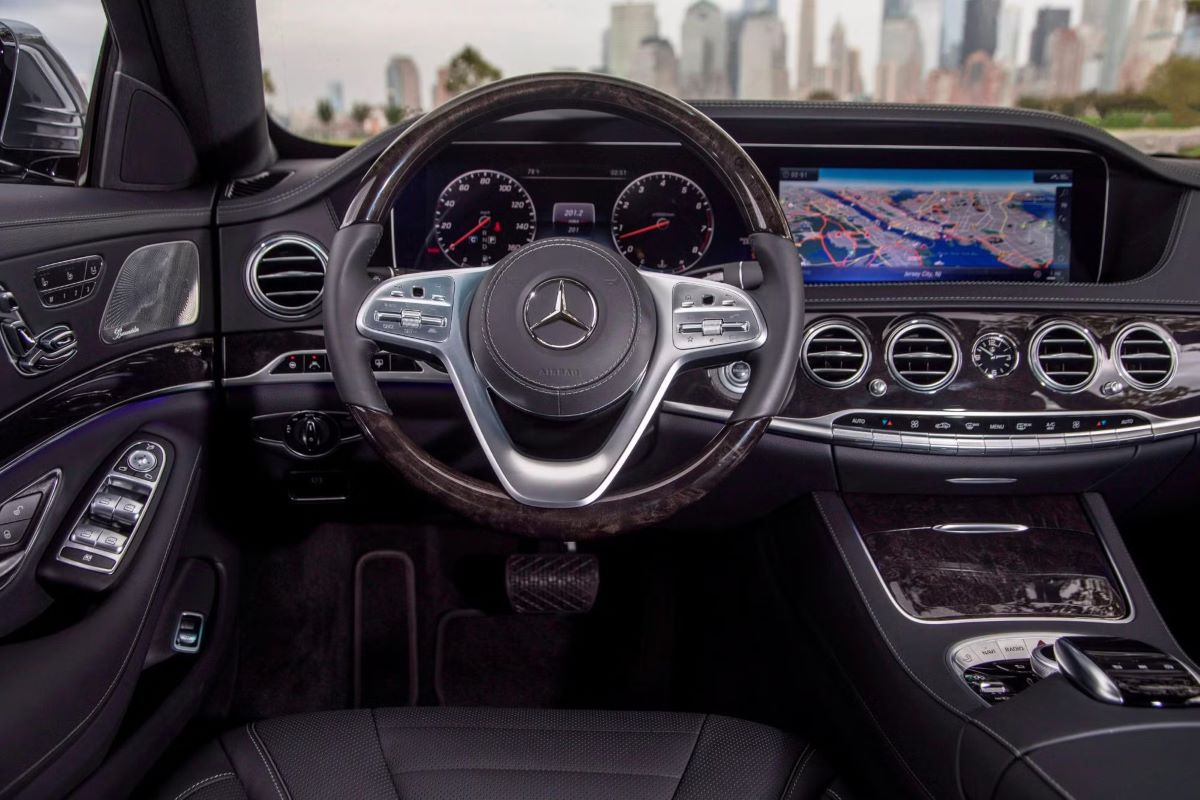
It typically mimics the classic “two round dial” layout found in many conventional instrument clusters, but with vibrant, high-resolution graphics replacing the mechanical instruments.
The right display handles infotainment and comfort settings. While navigating this screen may take some time to get used to, it becomes intuitive with practice.
The carousel-style on-screen menus are controlled by a console-mounted rotary knob, and the system proves logical once familiarized.
The Mercedes-Benz S-Class represents the pinnacle of luxury, a flagship sedan that’s the epitome of sophistication. It’s the kind of vehicle that commands respect and admiration, designed for those at the top.
The S-Class blends cutting-edge technology with opulent materials and finishes, offering a driving experience that combines supreme comfort with exceptional performance. Powering this luxurious sedan is an engine lineup that includes a 4.0-liter twin-turbocharged V8, delivering up to 463 horsepower.
This powertrain is paired with a swift 9-speed automatic transmission and the 4MATIC all-wheel-drive system, ensuring a smooth yet powerful drive. However, such a premium package comes at a price, with the base rear-wheel drive S 450 starting at \$89,900 before any additional options.
Inside the S-Class, luxury is evident in every detail. The interior is adorned with high-quality materials, featuring a split-tone, leather-topped dashboard that extends seamlessly to the door panels.
The driver’s seat offers a range of adjustments, including heating, cooling, and a massage function, ensuring comfort for long drives. A new multifunction steering wheel, equipped with touch control buttons reminiscent of smartphones, enhances the user experience.
The raised center console houses essential controls for the infotainment system and drive modes. The centerpiece of the cabin is the impressive 12.3-inch digital display, which integrates both the instrument cluster and infotainment screen.
Given the sedan’s size, the rear seating area offers near-limousine levels of comfort, catering to those who prefer to be chauffeured in style. Various packages elevate both the technological and luxury aspects, with everything meticulously handcrafted.
Driving the Mercedes-Benz S-Class is an experience like no other, designed to offer an effortlessly smooth ride or a more dynamic, responsive experience depending on your driving style.
The Airmatic semi-active suspension system continuously adapts to maintain the perfect balance between comfort and performance. It adjusts ride firmness, ensuring a smooth cruise or a firmer setup for a more controlled drive, while lowering the ride height at high speeds for improved stability.
The 4MATIC all-wheel-drive system is continually adjusting to provide optimum traction, working alongside features such as torque vectoring, electronic stability control, and active brake assist. These systems are necessary because the S-Class, particularly with the more powerful twin-turbo V8 engine, delivers impressive speed.
While the electronic systems at play might make the steering feel slightly less connected, the car’s behavior is always predictable, giving the driver a sense of control and confidence. The 9-speed 9G-Tronic automatic transmission is a standout, offering near-instant gear shifts that make acceleration feel effortless and smooth.
Performance-wise, the S-Class offers impressive power, especially considering its size. The S 450 model features a twin-turbocharged 3.0-liter V6 engine, producing 362 horsepower. This engine propels the sedan to 60 mph in just 5.1 seconds in rear-wheel drive configuration, or 4.9 seconds with all-wheel drive.
The more potent 4.0-liter twin-turbo V8 cranks out 463 horsepower and a robust 516 lb-ft of torque, enabling the car to reach 60 mph in a mere 4.6 seconds, a remarkable feat for such a large sedan. For those craving even more performance, the AMG variant delivers an astonishing 603 horsepower, but that’s a whole different level of performance and refinement.
3. 2018 Tesla Model S
The Tesla Model S electric car has received widespread acclaim for various aspects of its design and driving experience, with particular attention given to its innovative digital instrument panel and driver interface.
Tesla revolutionized the concept of what an instrument panel could and should be, laying the groundwork for future innovations like those seen in the 2019 Audi A8.
The Model S dashboard is deceptively simple, which can be attributed to the fact that electric vehicles have fewer parameters to monitor compared to traditional cars.
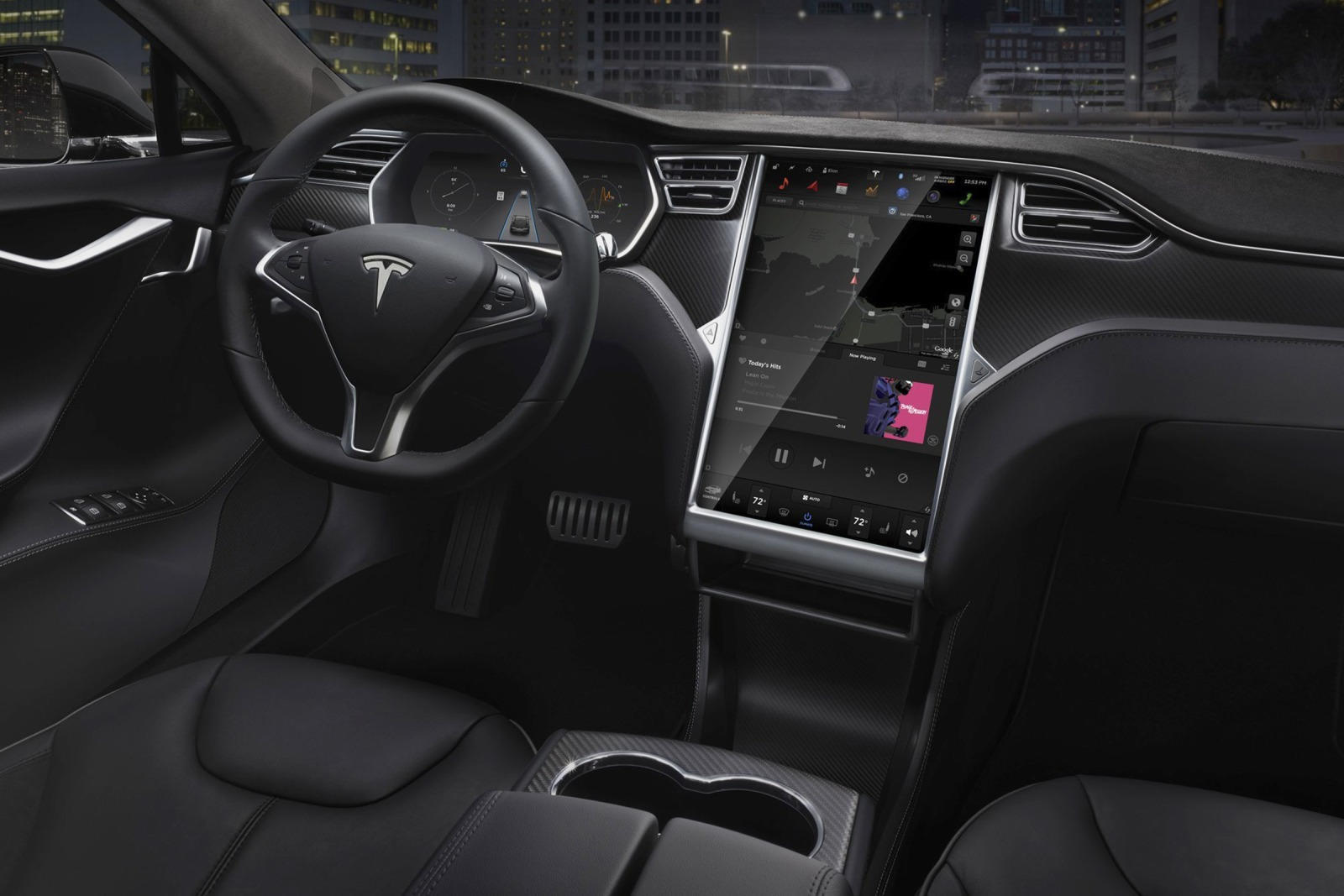
There is no need to track coolant temperature, oil temperature, or engine revolutions. Instead, the Tesla features a central round modular display that adapts to the vehicle’s current state.
While driving, the display shows critical information such as speed, a power meter, charge level, estimated range, and the currently selected gear.
When the car is parked, the display shifts to show the estimated range and the status of the doors. When plugged into a charger, the instrument panel displays the state of charge and other charging-related details.
4. 2019 Honda Clarity Fuel Cell
Vehicles that incorporate cutting-edge technologies, such as those powered by hydrogen fuel cells, are certainly worthy of futuristic digital dashboards.
The 2019 Honda Clarity Fuel Cell sedan excels in this area, showcasing a digital dash that doesn’t disappoint.
At the top of the dashboard, housed in its own dedicated pod, sits a large digital speedometer. It serves as a nearly head-up display, but without the need for projection.
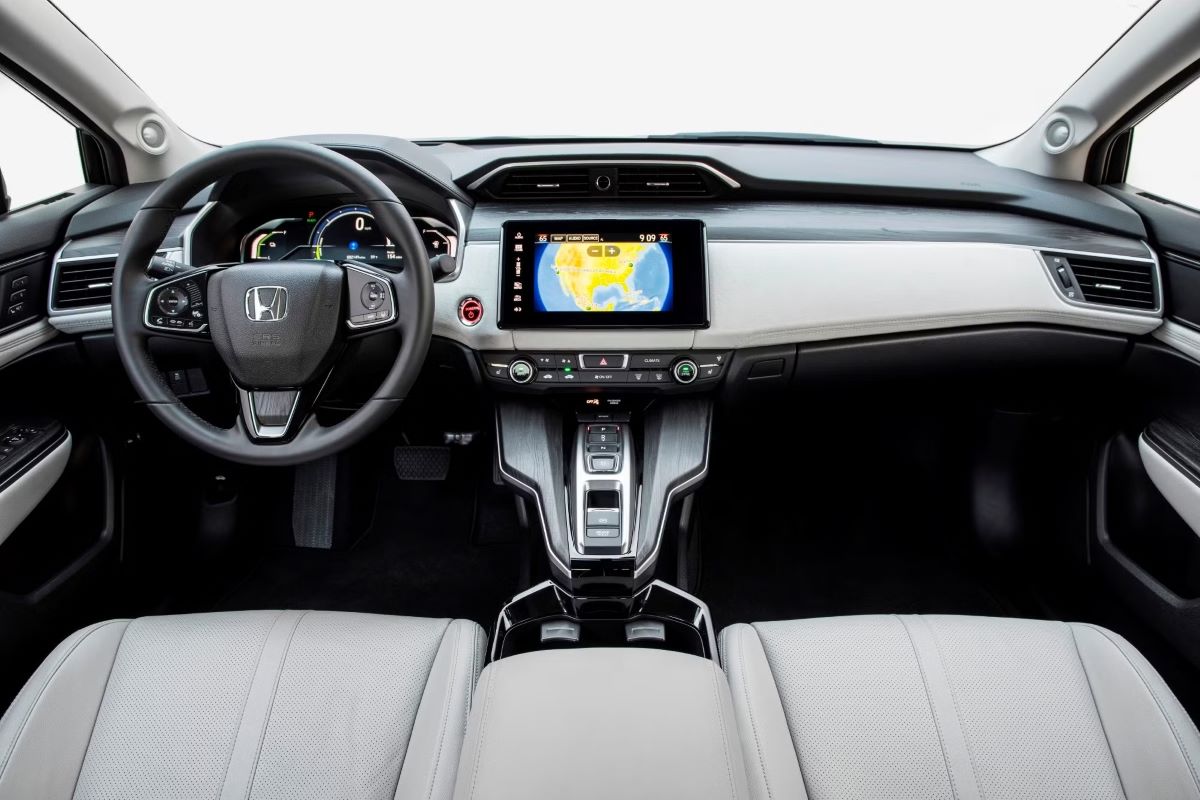
Beneath this, the display takes on a three-dimensional format to present key information such as hydrogen consumption, battery levels, motor output, and other crucial details in a style reminiscent of a video game.
A centrally positioned, ball-shaped H2 meter tracks hydrogen consumption, changing color and size based on driving conditions.
During periods of high consumption, the ball appears large and amber-colored, signaling the need for caution. As consumption decreases, the ball shrinks, transitioning from yellow to blue as usage drops further.
The fuel cell stack’s output gauge and the battery output/charge display are positioned along the perimeter of the screen.
5. 2018 Chevrolet Volt
The Chevrolet Volt’s drive system differs from that of a typical plug-in hybrid electric vehicle, as its gasoline engine essentially never powers the wheels. However, the Volt still shares many characteristics with other PHEVs, including a sophisticated digital instrument panel.
Drivers have the option to configure the instrument cluster’s LCD screen in four different ways. The “Classic” mode is the simplest, showing basic information such as speed and range.
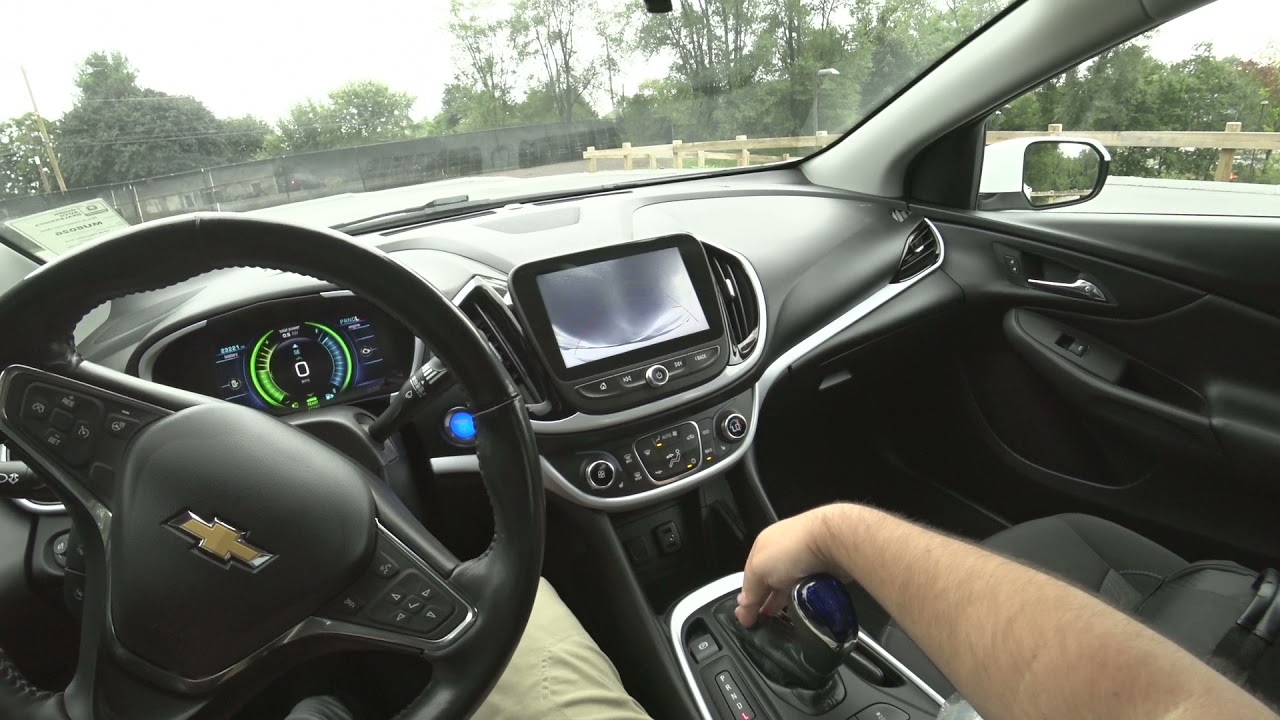
The “Classic Enhanced” mode goes a step further by adding visuals that display driving efficiency and power usage. The “Modern” mode introduces an “efficiency ring” that changes color from green to yellow depending on driving behavior, while still offering basic details like speed and range.
The most advanced display option, “Modern Enhanced,” incorporates the “efficiency ring,” along with additional power usage data and the basic information of speed and range.
6. 2019 Infiniti QX50
The designers of the 2019 Infiniti QX50 crossover embraced the idea that the more displays, the better. They believed that if one display is good, two displays are better, three displays even better, and four displays are the ultimate.
The QX50 puts this theory into practice with a variety of screens designed to enhance the driving experience.
At the top, the QX50 features a head-up display positioned within the driver’s line of sight. This display shows vehicle speed and important warnings. The information is projected onto a 9-inch area of the windscreen, requiring the driver to adjust their sightline by just four degrees.
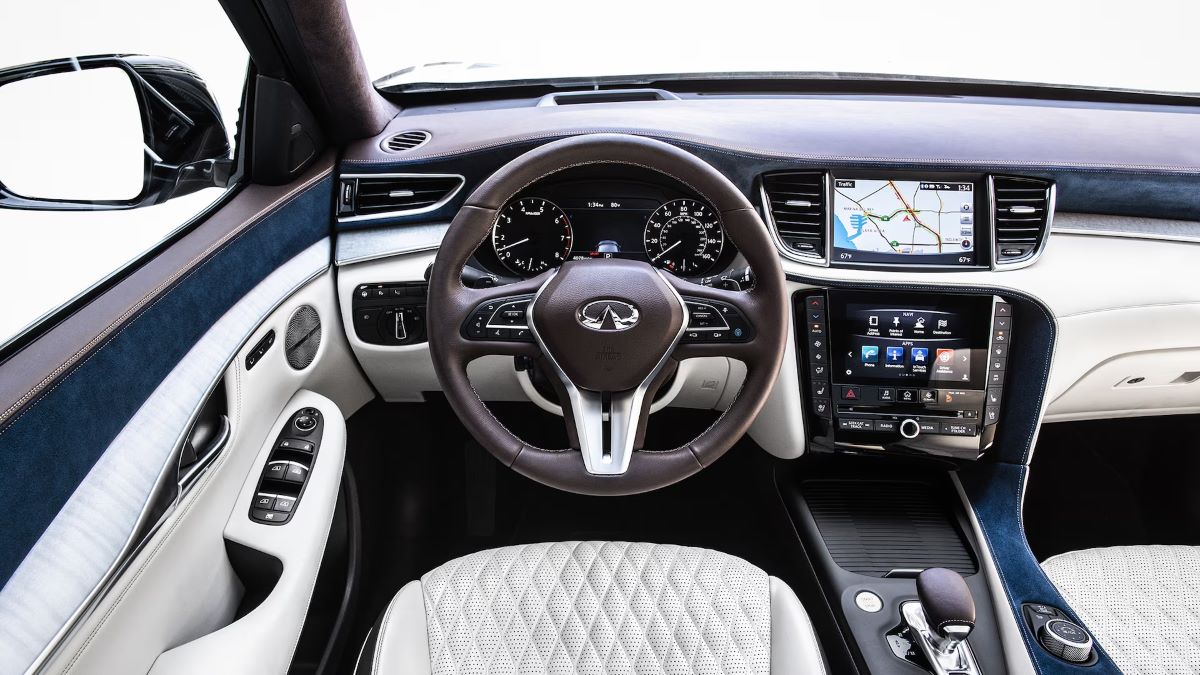
The second display is located between the speedometer and tachometer, providing driving information, safety messages, and a real-time readout of the engine’s power output and efficiency.
In the center of the dashboard, an 8-inch upper touchscreen dominates the space, providing vital information such as navigation instructions. Finally, a separate 7-inch lower touchscreen sits beneath it, offering climate control settings, app access, and entertainment features.
The Infiniti QX50 stands out visually among other compact-luxury crossovers, and it also offers a unique engine feature— the world’s first use of variable compression in a production vehicle’s engine. This innovative technology aims to enhance both fuel efficiency and performance.
However, in our testing, the turbocharged four-cylinder engine didn’t deliver the extraordinary fuel economy one might expect. Despite this, the QX50’s interior remains one of the most comfortable in its class, and its cargo space is quite practical as well.
While the higher trim levels feature more luxurious finishes and additional sought-after features, all versions of the QX50 provide a quiet ride and a smooth, relaxed driving experience. Overall, the QX50 combines conventional luxury crossover qualities with an unconventional engine twist.
For 2019, the Infiniti QX50 receives a complete redesign, marking the introduction of a stunning exterior, a significantly upgraded interior, and the debut of the variable-compression engine.
The 2019 model replaces the previous generation, which was less well-known, with a vehicle that brings cutting-edge features to the luxury crossover segment. The base price for the 2019 Infiniti QX50 starts at $37,675, with higher trims reaching up to $44,475 depending on options.
There are three available trim levels: PURE, LUXE, and ESSENTIAL. All-wheel drive is available as an upgrade for an additional $1,800. The base model is priced lower than comparable competitors, such as the BMW X3 and Volvo XC60. However, the entry-level QX50 Pure lacks some of the desirable features found in higher trims.
For the best value, we recommend the QX50 Luxe trim, which, while still less expensive than base models from rivals, includes standard features like a blind-spot monitor and a panoramic sunroof. Additional options such as heated front seats and a 4G LTE mobile hotspot can further enhance comfort and convenience.
Under the hood, every QX50 is powered by a turbocharged four-cylinder engine with variable compression technology, referred to as VC-Turbo or VC-T. This engine produces 268 horsepower and 280 lb-ft of torque, paired with a continuously variable automatic transmission (CVT) that delivers power to either the front or all four wheels.
For those seeking the Tow package, which allows the QX50 to pull up to 3,000 pounds, all-wheel drive is required. The VC-Turbo engine seamlessly adjusts between high compression for steady cruising and low compression for hard acceleration.
While the engine doesn’t provide an exhilarating performance when accelerating, it offers enough power for most drivers. However, the engine can be loud under heavy throttle, especially with the CVT, which is more noticeable in city driving. At highway speeds, the noise levels decrease significantly.
The QX50 focuses more on comfort and luxury rather than sporty handling. It delivers a smooth, composed ride, absorbing rough roads well and remaining comfortable on highways. Passengers experience minimal disturbance from uneven surfaces, further elevating the comfort.
The steering feels balanced and becomes firmer in the selectable Dynamic and Dynamic+ modes, though it lacks feedback from the road. Despite this, the steering is precise and light, making the vehicle easy to maneuver.
One downside is the soft brake pedal, which can feel inconsistent, leading to less precise stops, especially in heavy traffic where the car’s nose may dive forward during hard braking. Nevertheless, the QX50 performs well in emergency-braking tests, stopping from 70 mph in 164 feet.
7. 2018 Chevrolet Bolt EV
For drivers familiar with the Chevrolet Volt, the instrument panel of the Bolt EV will feel quite similar.
However, there are notable differences, which make sense considering the Bolt EV does not include a gasoline engine. While the Volt offers four display themes, the Bolt EV simplifies this with just three options.
The “Classic” mode displays essential information such as speed, range, and other operational data, along with an “efficiency bar” that changes color from green to yellow depending on driving patterns.
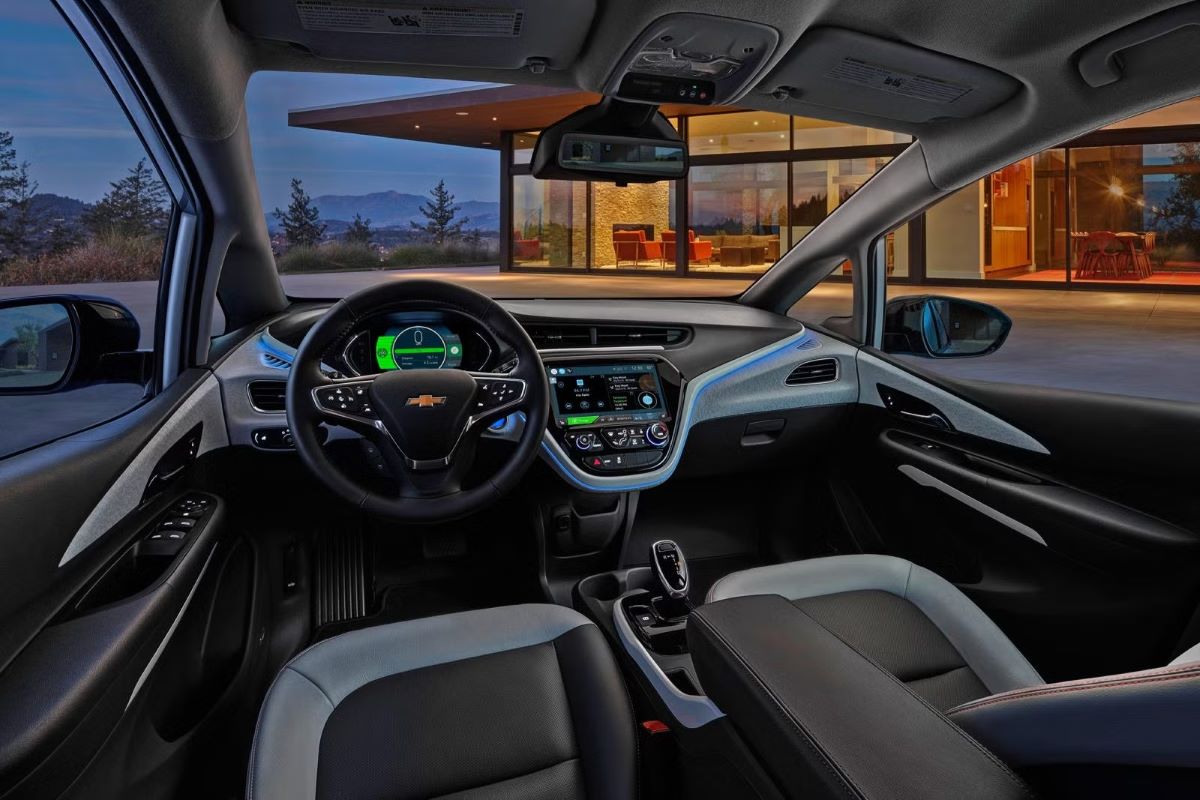
The “Modern” mode also presents basic information and power usage, but its standout feature is an “efficiency ball” that moves up and down, reflecting driving efficiency.
The “Enhanced” mode provides basic information, along with indicators for maximum and minimum range and power usage.
This mode also includes an “efficiency ring” that transitions from green to yellow based on driving efficiency. The choice of which display to use whether it’s the bar, ball, or ring is entirely up to the driver.
8. 2009 Lamborghini Reventon
Supercar manufacturers face a unique challenge when it comes to high-tech digital displays. Their wealthy clientele expects brands like Lamborghini to create vehicles with cutting-edge graphics and displays that justify their hefty price tags.
However, compared to mass-market carmakers, niche supercar brands like Lamborghini have a smaller workforce dedicated to developing components such as instrument panels.
Even more challenging is the fact that the development costs for a supercar’s technology can only be spread over a limited number of production vehicles.
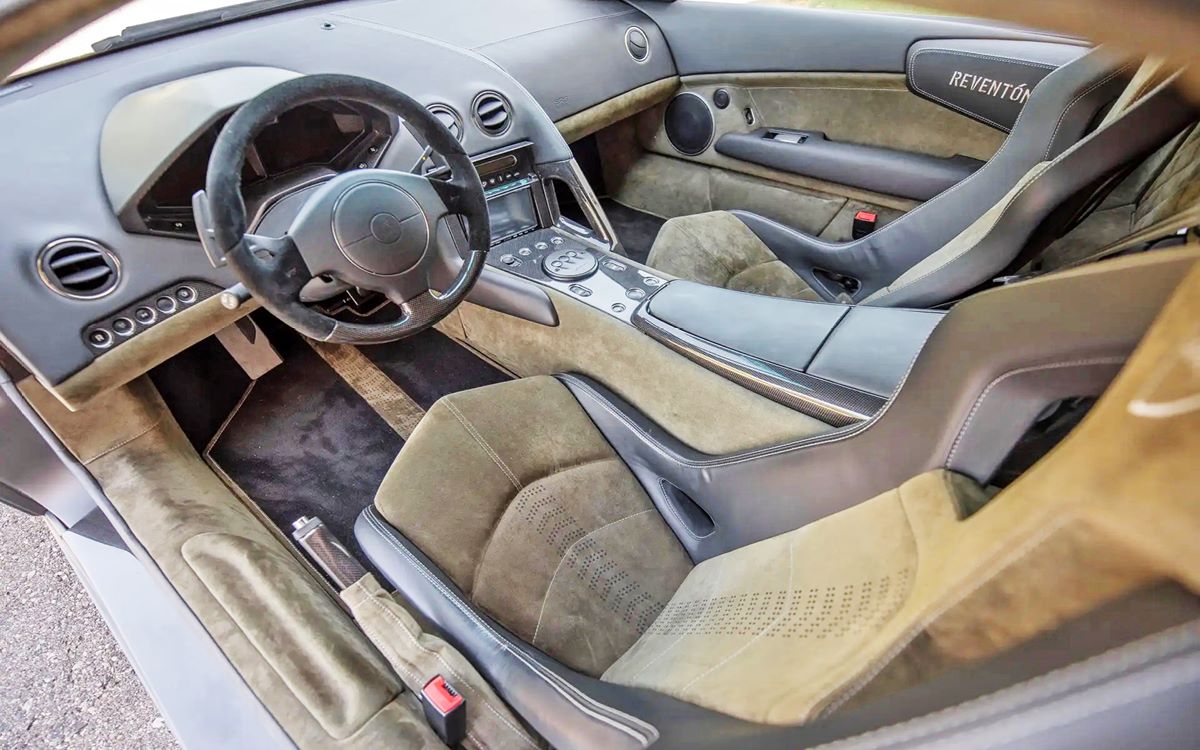
Despite these hurdles, Lamborghini deserves credit for the digital dashboard featured in its Reventon, even though some critics found it confusing.
The vehicle is equipped with three digital displays that can be customized to show various information, such as g-force.
However, the overall presentation leans more towards a jet-fighter aesthetic than a user-friendly layout. Despite its complexities, Lamborghini earns recognition for pushing the boundaries and attempting something bold.
For the pragmatic, no-nonsense individual, the Reventon Roadster might seem like an expensive, unnecessary luxury. You could even argue that it’s simply a Murcielago convertible in disguise, but when you look at the car, it’s impossible to deny the impressive design. No other car at the show stirred excitement quite like this striking machine.
With fewer than 20 units set to be produced, the Reventon Roadster comes with a hefty price tag of around \$2.2 million, but for those willing to pay, it offers a rare and captivating presence. This is a car that demands attention, and it doesn’t disappoint when you start the engine.
Under the hood, the Reventon Roadster shares the Murcielago LP670-4 SV’s 6.5-liter V12, making it capable of going from 0 to 100 km/h in a claimed 3.4 seconds. The 493kW engine delivers a symphony of power, with a snarling, aggressive roar that seems to come from just inches behind you. The sound alone is almost worth the price of admission.
Visually, the Reventon Roadster takes its inspiration from fighter jets, with sharp angles, wide flanks, and a stance that hugs the tarmac. The body, which is almost entirely made of carbon fiber (excluding the doors), gives the car an aggressive and dynamic appearance. Its curb weight sits at 1690 kg, which is reasonable given its build.
Inside, the instrument cowl is crafted from aluminum, and the surfaces are coated in lightweight Alcantara for a high-end feel. For those with deep enough pockets, the Reventon Roadster will be available for purchase starting next month.
9. 2018 Tesla Model 3
While the Tesla Model S set the standard for the sophisticated digital dashboards seen in many high-end luxury vehicles today, the company’s Model 3 has chosen to take digital dash design in a distinctly different direction.
Tesla could have easily created a display similar to the acclaimed Model S, but instead, the Model 3 features a unique design that leaves the area directly in front of the driver free from any traditional instrumentation.
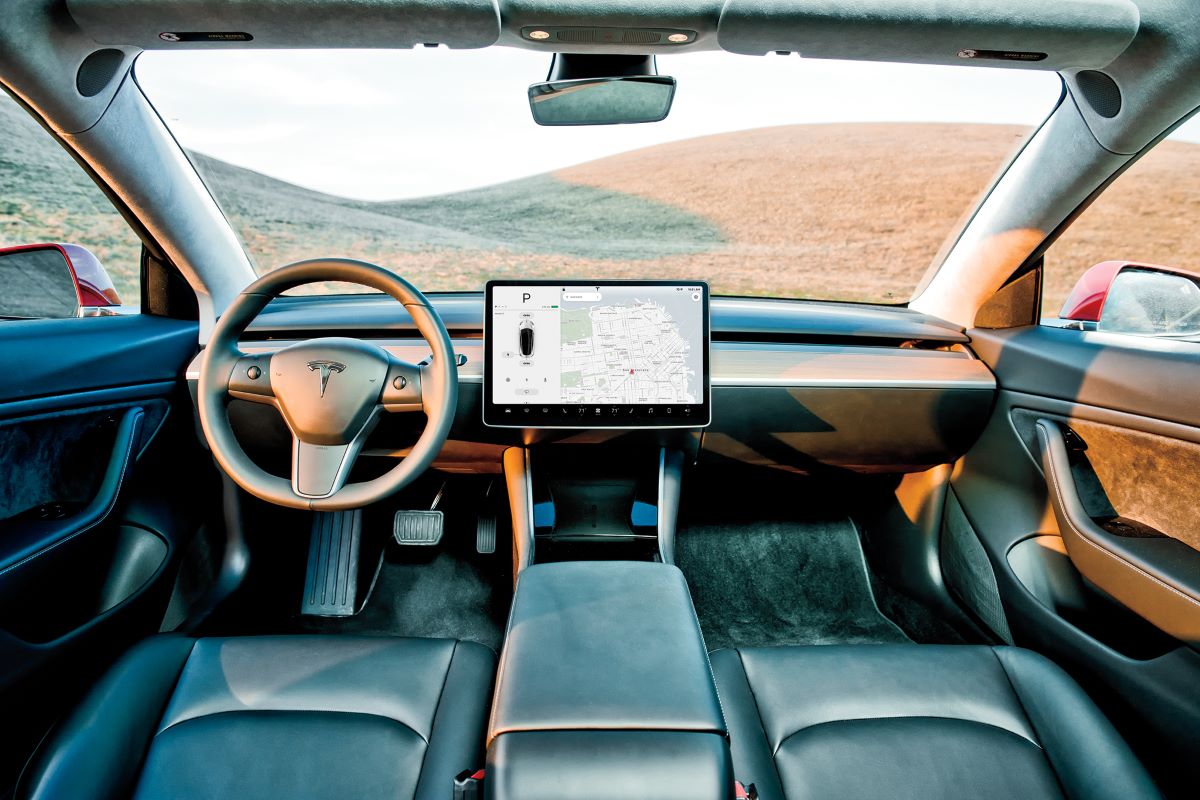
Instead, the Model 3 presents essential information vehicle speed, range, and gear selection (drive, park, reverse) in the upper left corner of the car’s central, iPad-like display.
Just below this, there is an area referred to as “Cards,” where drivers can access updates such as incoming calls, seatbelt reminders, and the current state of the windshield wipers.
By swiping within this area, users can also view the rear-view camera display, manage wiper settings, and access trip information.
Throughout its journey to production, the Tesla Model 3 stirred up discussions about its famously minimalist interior. Some critics argued that this design was perhaps too simplified, particularly given its lack of a traditional gauge cluster, dashboard vents, and many of the conventional wheel- and stalk-mounted controls that are typically found in other cars.
Instead of the usual array of buttons and knobs, the Model 3 features a 15-inch touchscreen as its primary interface, resulting in a strikingly clean and simple look that, as someone with a fondness for mid-century modern furniture, I find aesthetically appealing. However, the word “simple” is rarely applicable when it comes to interacting with the car.
Simple tasks, like adjusting a vent, now require several taps into a submenu on the touchscreen. Want to adjust the wing mirrors or reposition the steering wheel? That requires a few more taps.
This was one of my main complaints during my last drive in the Model 3, and I’m happy to report that Tesla has addressed much of that criticism. Many of the interface revisions have not only made the car more user-friendly but also safer.
For instance, adjusting the follow distance for the adaptive cruise control used to involve accessing a submenu, which I found inconvenient and, at times, dangerous. In the latest version, changing the follow distance is now as simple as turning the right thumbwheel on the steering wheel.
Additionally, adjusting the cruise speed, which previously required using the touchscreen, can now be done by rolling the same wheel up and down. This improvement is substantial and a welcome one, although it still doesn’t feel as intuitive as the dedicated controls found in most other cars.
Other minor improvements, such as easier-to-use touchscreen wiper controls, contribute to making the Model 3 more user-friendly overall.
However, living with the Model 3 still represents a significant departure from the standard car experience. While those of the touchscreen generation may prefer this approach, others who are more accustomed to physical buttons may find it frustrating as they learn the nuances of the system.
This shift also extends to the keyless entry system. Instead of a traditional key fob, the Model 3 uses an NFC-enabled card, similar to a hotel room key. I appreciate how compact and wallet-friendly the card is, and it’s inexpensive enough that you can give one to a friend if needed.
However, having to tap the card against the B-pillar to unlock the doors can be inconvenient, especially if you’re in a rush. Alternatively, the Model 3 can be unlocked using your phone. Once paired via Bluetooth LE, your phone will automatically connect to the car and unlock it as you approach—most of the time.
On a few occasions, I had to wait a few seconds before the car would unlock, and on one occasion, I had to toggle my phone into airplane mode before it would work. While these are minor inconveniences, they could become more bothersome if you’re trying to get in quickly, such as in a rainstorm.
10. 2016 Toyota Mirai
The Toyota Mirai, a hydrogen fuel cell vehicle, is designed to lead us into the hydrogen-powered future. Recognizing this, Toyota’s designers made sure that the instrument panel reflected the Mirai’s advanced, futuristic nature, setting it apart from conventional sedans.
They succeeded in this endeavor by incorporating a unique three-level instrument setup, none of which are positioned directly in front of the driver.
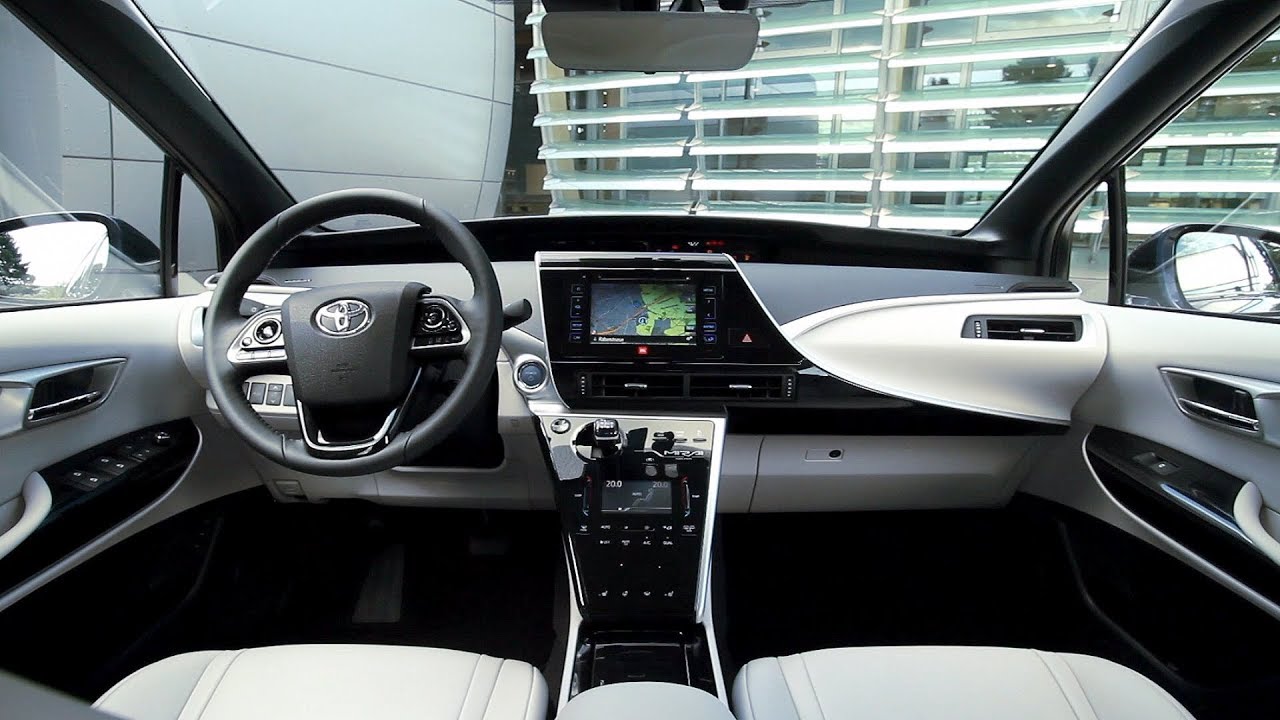
The top-level digital screen, slightly angled toward the driver, features a large digital speedometer with bold numerals. The odometer and fuel level are also displayed in this section.
The middle section of the display provides details about the vehicle’s status, while the right-hand third of the upper screen indicates the transmission’s gear (drive, reverse, or park) and displays the time.
Beneath this, a more traditional rectangular “center stack” screen offers either navigation or entertainment information, and the lowest screen is dedicated to controlling the climate system.

